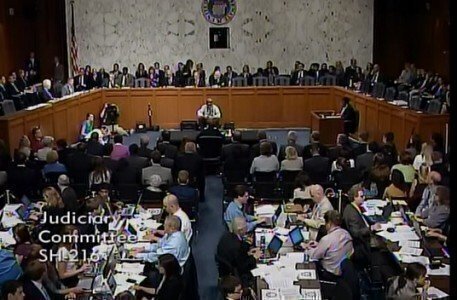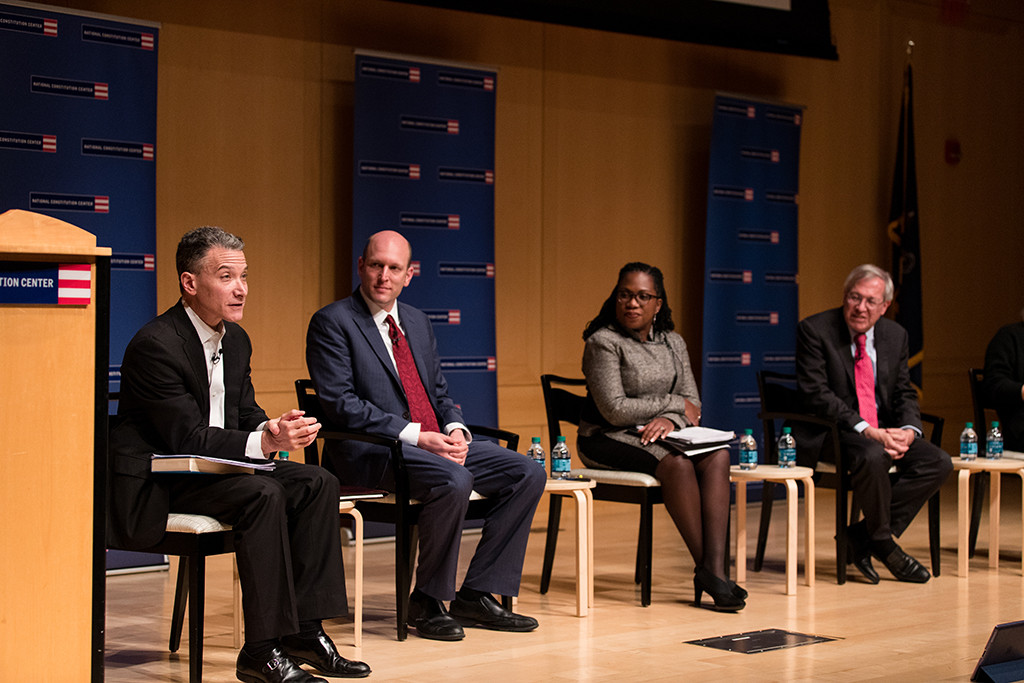With President Obama announcing Merrick Garland as his nominee, how does the Senate go about reviewing and approving a person nominated to the Supreme Court by the President?
 In February, President Obama said he would nominate a new Justice candidate to the Supreme Court, to fill the seat previously occupied by the late Associate Justice Antonin Scalia.
In February, President Obama said he would nominate a new Justice candidate to the Supreme Court, to fill the seat previously occupied by the late Associate Justice Antonin Scalia.
And on Wednesday, the President said he would submit Garland's name to the Senate for consideration. Garland, 63, is the chief judge of the U.S. Court of Appeals for the District of Columbia.
Under the Constitution’s “Appointments Clause” in Article II, Section 2, Clause 2, the President “shall nominate, and by and with the Advice and Consent of the Senate, shall appoint ... Judges of the supreme Court.”
Currently, Senate Majority Leader Mitch McConnell, Republican members of the Judiciary Committee, and the Republican National Committee have opposed the nomination of any Supreme Court candidate during an election year. The Democrats and President Obama want a nominee considered by the Senate in the immediate future.
In the end, the Senate controls the “advice and consent” part of the nomination and approval process, and the Republicans control the Senate. But here is a review of how the process usually works, and where any Obama nominee would be blocked.
Under the constitutional Supreme Court nomination process, the President officially announces a nominee and then notifies the Senate of a nominee in a letter to the Senate. Under Senate standing rules going back to 1868, the nomination is sent to the Judiciary Committee, unless the nominee is a current or former Senate member. (In the most-recent incident of a former Senator as the nominee, the matter was referred back to the Judiciary Committee and not directly considered by the full Senate.)
Using the Senate’s parliamentary rules, the Senate Judiciary chair, Charles Grassley would have several ways to keep the nomination from moving out of committee. The Judiciary Committee can undertake a pre-hearing investigative stage, followed by public hearings and a decision on a recommendation for the full Senate. It is unclear if any of those actions would occur if the committee decides to defeat or table the nomination process before it gets to the Senate floor.
If the Judiciary Committee were to decide to proceed along the usual consideration path, the nominee first undergoes the extensive investigation process. The nominee fills out a long questionnaire, and the FBI also conducts an investigation. The American Bar Association will issue a rating for the nominee based on professional qualifications. And traditionally, the nominee will meet with Senators who are part of the approval process.
Next is the public hearing process, which many people are familiar with. The nominee appears at a public hearing at the Senate, facing a variety of questions from the Judiciary Committee. According to the Congressional Research Service, in recent years it has taken an average of 39 days from a candidate’s nomination for the first public hearing to occur. On average, hearings last four to five days, but Robert Bork’s hearing was 11 days long.
The last stage at the Judiciary Committee level are public meetings to report a recommendation to the full Senate for consideration. By a majority vote, the committee can report the nomination favorably, report it unfavorably, or report it without making any recommendation at all. It is also possible for the committee to take no action of any type to send a report to the full Senate.
If the nomination is reported to the full Senate for consideration, it is placed on its Executive Calendar. The Senate Majority Leader decides how to approach the process. The Leader can ask for unanimous consent for the nomination to head directly to the floor for debate, or put in place measures to limit a filibuster. The nomination is then debated by the full Senate in Executive Session, where a filibuster is possible, if not limited by prior rules. A cloture vote, requiring 60 votes, would end a filibuster.
A majority of the Senate would then need to approve the nomination. The GOP currently has 54 votes in the 100-seat Senate, and any nomination this year would need Republicans voting for an eventual confirmation – or to stop a filibuster of the nomination vote.
Since 1975, the average length of the process between a presidential nomination and a final Senate vote in 67 days. If the nomination is approved, the Secretary of the Senate validates the outcome, and tells the White House. The President signs the Justice’s commission and then the Justice is sworn into office.
If the nomination is defeated, there are parliamentary tactics that can be used, usually without success, to have the nomination immediately reconsidered. But just because a nominee is rejected by the full Senate, that person isn’t disqualified from becoming a nominee again. But of the 124 Supreme Court nominees since 1789, 12 people were rejected by a full Senate vote, and none return as a successful nominee.
Scott Bomboy is the editor in chief of the National Constitution Center.







